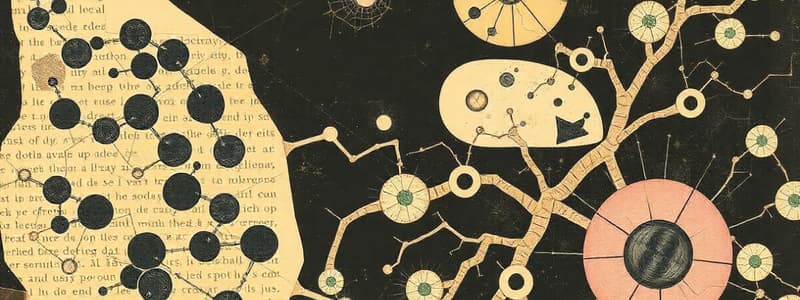Podcast
Questions and Answers
What are the two types of Endoplasmic Reticulum?
What are the two types of Endoplasmic Reticulum?
- Active ER and Passive ER
- Rough ER and Dense ER
- Rough ER and Smooth ER (correct)
- Tubular ER and Granular ER
What distinguishes Rough Endoplasmic Reticulum from Smooth Endoplasmic Reticulum?
What distinguishes Rough Endoplasmic Reticulum from Smooth Endoplasmic Reticulum?
- Rough ER has no ribosomes, while Smooth ER has ribosomes.
- Rough ER only synthesizes lipids, while Smooth ER synthesizes proteins.
- Rough ER has ribosomes attached to it, while Smooth ER does not. (correct)
- Rough ER is involved in detoxification, while Smooth ER is not.
Which of the following is NOT a function of the Endoplasmic Reticulum?
Which of the following is NOT a function of the Endoplasmic Reticulum?
- Photosynthesis (correct)
- Protein synthesis
- Transport of materials
- Lipid synthesis
What is the primary role of the ribosomes attached to the Rough Endoplasmic Reticulum?
What is the primary role of the ribosomes attached to the Rough Endoplasmic Reticulum?
Which process describes the usefulness of proteins and lipids produced by the Endoplasmic Reticulum?
Which process describes the usefulness of proteins and lipids produced by the Endoplasmic Reticulum?
Flashcards are hidden until you start studying
Study Notes
Endoplasmic Reticulum (ER)
- The endoplasmic reticulum (ER) is a network of interconnected membrane-bound tubes and sheets within a cell.
- The ER membrane is similar in structure to the plasma membrane.
- The ER exists in two forms: tubules and vesicles.
- There are two types of ER: rough ER (RER) and smooth ER (SER).
- RER appears rough due to the presence of ribosomes attached to its surface.
- Ribosomes are the sites of protein synthesis.
- SER lacks ribosomes and is responsible for synthesizing lipids.
- Proteins and lipids are essential for building cell membranes, a process known as membrane biogenesis.
- Some proteins and lipids produced by the ER function as enzymes and hormones.
Functions of ER
- Synthetic Activities: The ER plays a crucial role in synthesizing proteins (RER) and lipids (SER).
- Transport of Materials: ER acts as a network of channels, facilitating the movement of materials within the cell.
- Cytoplasmic Framework: The ER contributes to the structural framework of the cytoplasm, providing support for biochemical activities.
- Detoxification: In liver cells of vertebrates, the ER is involved in detoxifying harmful substances like poisons and drugs.
Studying That Suits You
Use AI to generate personalized quizzes and flashcards to suit your learning preferences.




